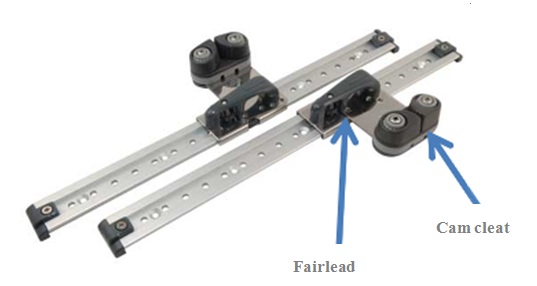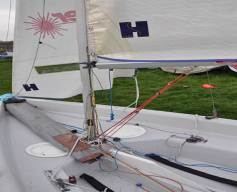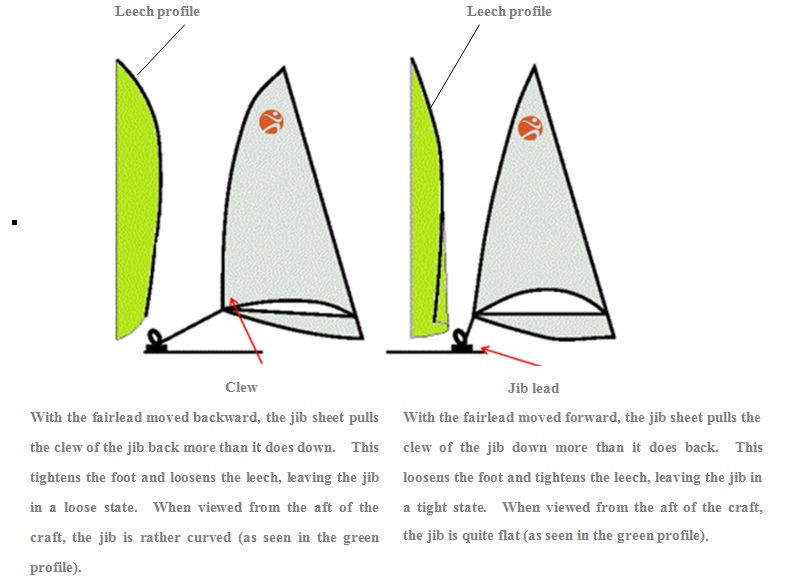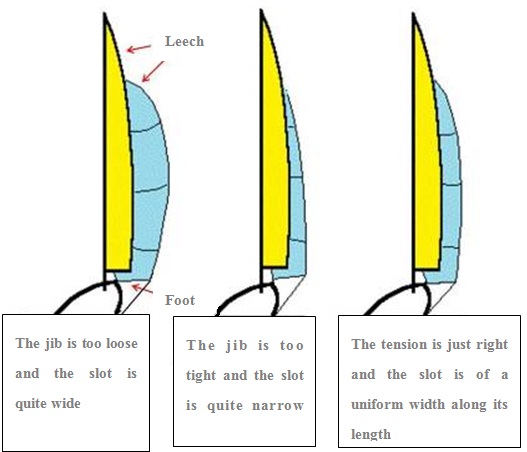  |
| High performance craft (such as Laser 2000) are equipped with jib leads on both sides of the cabin for adjusting the shape of the jib. On the track of the jib lead are movable parts including the fairlead and the cam cleat. Before a craft sets sail, the jib sheet should be led through the fairlead and be fixed by the cam cleat. In the course of sailing, the fairlead may be moved back and forth to enable the jib sheet to be pulled to adjust the shape of the jib. Moving the fairlead forward loosens the foot and tightens the leech; moving the fairlead backward, on the other hand, tightens the foot and loosens the leech. The mechanics are illustrated as follows: |
 |
| It can therefore be seen that the jib lead controls the tension and curvature of the jib. The tension of the jib in turn determines the width of the slot between the jib and the main. |
| The slot between the jib and the main, as viewed from the aft of the craft: |
 |
| If the jib is too loose and the slot is too wide at the top, air currents escape through the slot and help little in pushing the sails. If the jib is too tight and the slot is too narrow, air flow will be blocked, rendering it difficult to sail with speed. It is crucial to keep the jib at the right tension so that the slot is maintained at an appropriate and uniform width to enable smooth sailing. |
 Leisure and Cultural Services Department - Water Sports CentresLeisure and Cultural Services Department
Leisure and Cultural Services Department - Water Sports CentresLeisure and Cultural Services Department






